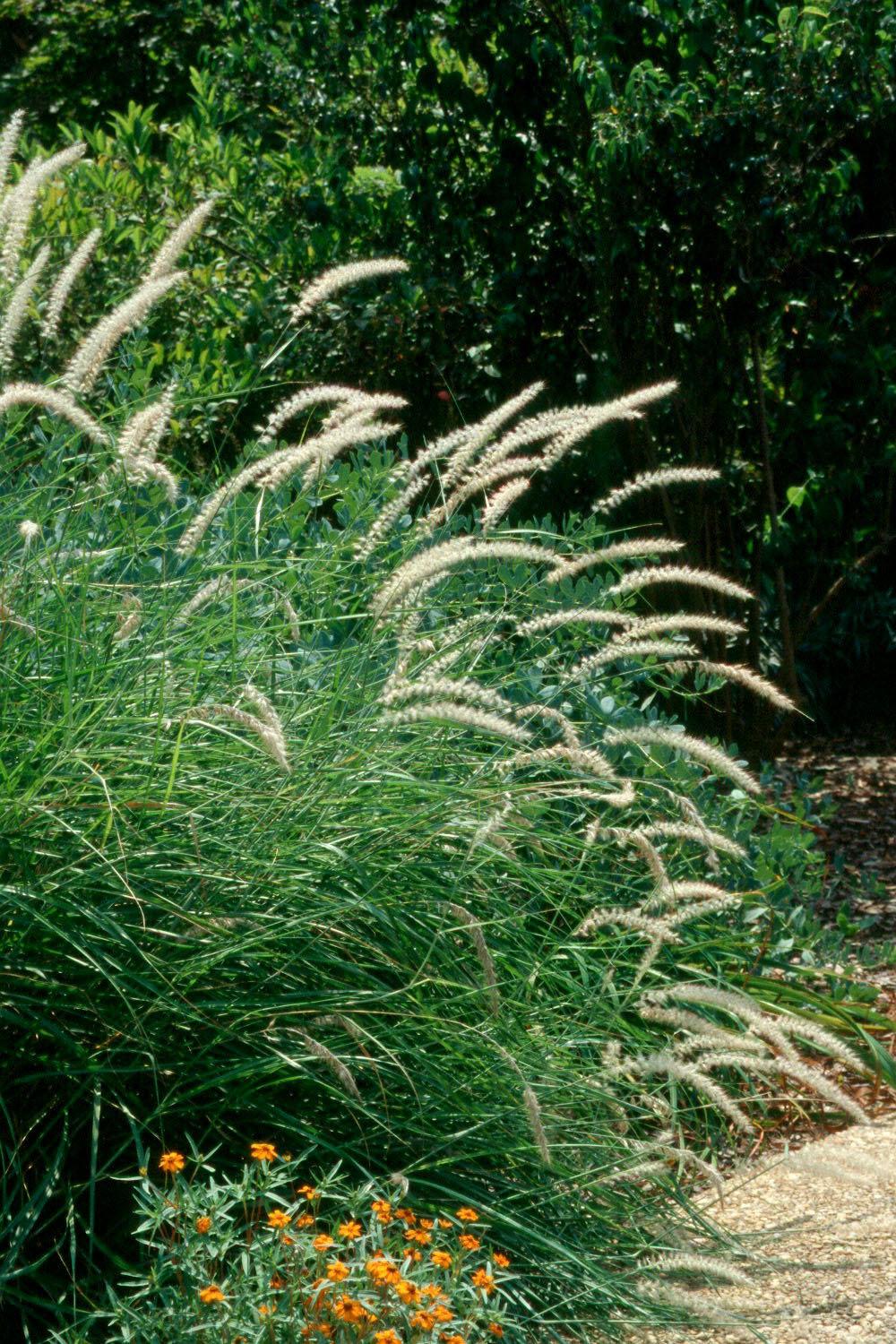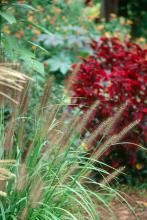Information Possibly Outdated
The information presented on this page was originally released on October 7, 2002. It may not be outdated, but please search our site for more current information. If you plan to quote or reference this information in a publication, please check with the Extension specialist or author before proceeding.
Grow ornamental grass for summer, fall beauty
By Norman Winter
MSU Horticulturist
Central Mississippi Research & Extension Center
The fountain grasses are among the prettiest plants in the landscape at this time of the year. They transition well from working with summer flowers to fall mums and ornamental kale and cabbage.
When I mention fountain grass, your first thought may be of purple fountain. This one is incredibly beautiful and worthy of being used even if it is an annual. In reality, there are several fountain grasses that are rugged, under-used perennials in our area. The first is one called Moudry, a dwarf selection of Pennisetum alopecurooides. What makes this one so special is its almost black plumes or flowers. The leaves give a nice texture throughout the growing season, and then wow us with their blooms in late summer and fall.
While Moudry and the other dwarf selection are also called Chinese fountain grass, Pennisetum orientale is known as oriental fountain grass. The oriental fountain grass is the exact opposite of Moudry. It is a 4-foot tall grass with pristine white blooms. Other fountain grasses have white blooms, but they aren't the glistening white of the oriental fountain grass.
In the garden, while the oriental fountain grass offers added excitement for its movement in the wind, Moudry's plumes are more stiff and erect. Both offer extra value if you are able to plant where they are back-lighted from the setting sun or landscape lighting.
You may be wondering if you should have planted these in the spring to have their show now. Planting now poses no problems and puts you ahead of the game for next year. Garden centers are loaded with all kinds of grasses, many of which are in bloom. Shopping now allows you to see the bloom and select the very best.
Choose a site in full sun, though a little shade is tolerated. The bed should be fertile, organic-rich and well-drained. Amend the soil if needed with 3 to 4 inches of organic matter and till to a depth of 8 to 10 inches. While preparing the soil, incorporate two pounds of a slow-release, 12-6-6-fertilizer per 100 square feet of bed space.
Plant at the same depth they are growing in the container, with the crown slightly above the soil profile. Space plants 18 to 36 inches apart as dictated by the variety. Apply a good layer of mulch after planting.
Cut the foliage back to the ground in late winter before spring growth resumes. Apply a light application of the fertilizer at pruning and again in mid-summer. Keep the grass watered during the summer for best appearance. Divide in the spring once clumps have become large enough.
Fountain grasses can be planted as an accent, specimen or in odd numbered groupings. If you are creating a new flower border, make it large enough to accommodate ornamental grass. Dwarf varieties excel in gardens with fall blooming chrysanthemums and burgundy-leafed varieties of coleus. Use with flowering kale and cabbage. Fountain grasses of all types work in perennial gardens with the black-eyed Susan, purple coneflower and salvias.
If the grass you mow is the only one you grow, then you are missing one of our best landscape performers.









